This AC 428 is like a half-price Cobra in an Italian suit
It was built on a stretched 427 Cobra chassis, powered by a big-block Ford V-8, and styled by a talented Torinese designer. It competed with the elite European GT cars of the late 1960s, and yet the AC 428 (aka the AC Frua) is more footnote than famous in car history. One of these obscure Anglo-Italo-American hybrids sold online this week for $417,000, and that’s a ton of money. In fact, we’ve never seen one sell for more. Compared to similar all-Italian cars or a later Shelby Cobra with a similar engine, however, it almost looks like a bargain.

The 1960s were a golden age for high-performance long-distance touring cars, including hybrids like Chrysler-powered Bristols and Chevrolet-powered Iso Grifos, and thoroughbreds like the Aston Martin DB5/DB6 and Ferrari 330. AC Cars of Thames Ditton in England had the lovely Ace/Aceca sports cars and enjoyed providing the basis for Carroll Shelby’s Cobra for several glorious years, but it was hard for the company to ignore the lucrative opportunity that the gran turismo market offered. The 428 was AC’s foray into that crowded segment.
In a lot of ways, the 428 made a lot of sense. The tubular chassis, hand-fabricated on the jigs originally used for the Cobras, was a race-proven unit that AC stretched by 6 inches for added space and stability. Independent suspension on all four corners helped keep the car planted. The engine was a 7-liter V-8 borrowed from Dearborn’s Ford Galaxie and rated at 345 hp and 462 lb-ft of torque. Because Italian styling is almost never a bad idea, AC enlisted the services of Pietro Frua, who had penned the Renault Caravelle, the Swiss Monteverdi, and the Maserati Mistral. Frua did recycle a lot of his ideas from the Maserati, to the point that a 428 and a Mistral are difficult to tell apart, but you know what they say about imitation and flattery. The vehicles are both gorgeous.
The 428, then, offered the looks and performance of a Ferrari, the running costs of a Yankee commuter car, the interior trimmings of an English luxury GT, and a legendary race car chassis. Other than complaints of heat seeping into the footwell from the monster Ford engine, the press gushed. Motor said the 428 “surges away into the middle distance with the silken surge of seemingly infinite torque,” and Autocar remarked that it “responds to the throttle like no other car we know and for normal sedate motoring it takes only a touch on the throttle to make the speedometer swing upwards at an unbelievable rate.” But despite all that, it wasn’t exactly a winning recipe. Labor unrest in Italy and challenges securing engines from Ford meant that AC’s two main suppliers were unreliable.
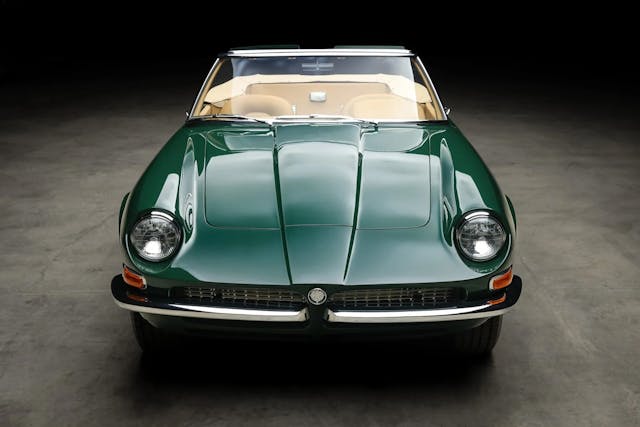
And even when things were going right, the 428 was expensive to build—a common problem with cars bodied in Italy but assembled somewhere else. After finishing the 428 rolling chassis, AC sent them to Frua in Turin. Frua welded on either Spider or Coupe bodywork and then shipped them back to England for AC to trim, paint, and install the drivetrain. These logistical costs resulted in the 428 being comfortably more expensive than an Aston Martin DB6 and roughly twice as much as an E-Type Jaguar. The energy crisis in 1973 also hit Britain fairly hard, and a 16-mpg high-dollar performance car was a tough sell. In the end, only 81 examples of the AC 428 left Thames Ditton.
Most were coupes and most came in right-hand drive. A decent number of 428s also came with a three-speed automatic rather than the standard four-speed manual. Which makes this example—a left-hand drive stick shift Spider with Halibrand wheels—quite special. One of about 30 Spiders, it spent time in the UK and Switzerland before being restored in the U.S. during the 1990s and winning its class at the Pebble Beach Concours d’Elegance in 1995. It has the nicks and blemishes inevitable on a 30-year-old restoration, but still looks lovely and to our eyes like a car in #2- (just shy of “excellent”) condition.
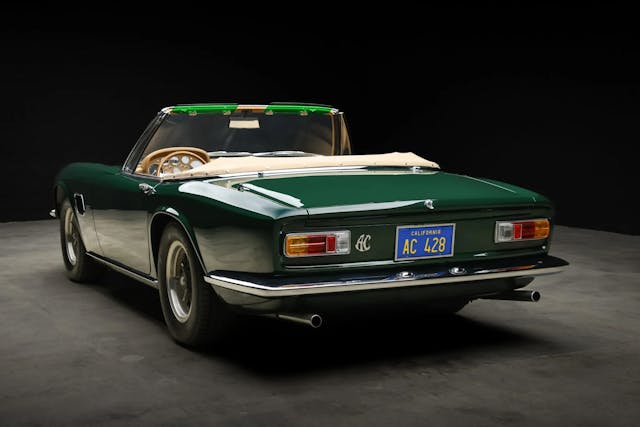
Yet it sold for 55 grand over its condition #1 (concours, or best-in-the-world) value in the Hagerty Price Guide. Credit the desirable configuration, and the fact that good examples of a car this rare don’t exactly pop up every week. Almost all of the 428s to hit the market over the past couple of years have been coupes, automatics, RHD, in scruffy condition, or some combination of the above. The closest real comparable sale was a $302,000 Spider that sold at the Monterey auctions in 2021, but even that was a RHD automatic.
Even at this market-leading result, though, it’s a lot of car for the money. Let’s just consider the condition #2 prices of the cars this green-over-tan beauty competed against in 1970. An Aston DB6 Volante is worth $1.25M. The visually similar Maserati Mistral, which has two fewer cylinders and 90 fewer horsepower, is worth $741,000. As for the Shelby, with which the 428 shares so much of its DNA, a 428-powered Cobra is a $1.1M car. Sometimes, the footnotes of automotive history can be the best buys.
***
Check out the Hagerty Media homepage so you don’t miss a single story, or better yet, bookmark it. To get our best stories delivered right to your inbox, subscribe to our newsletters.
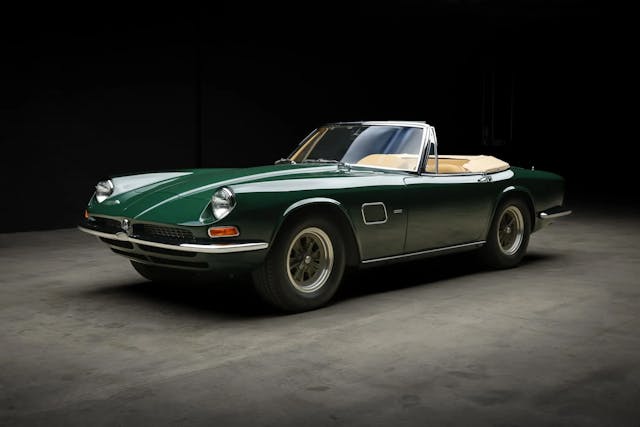
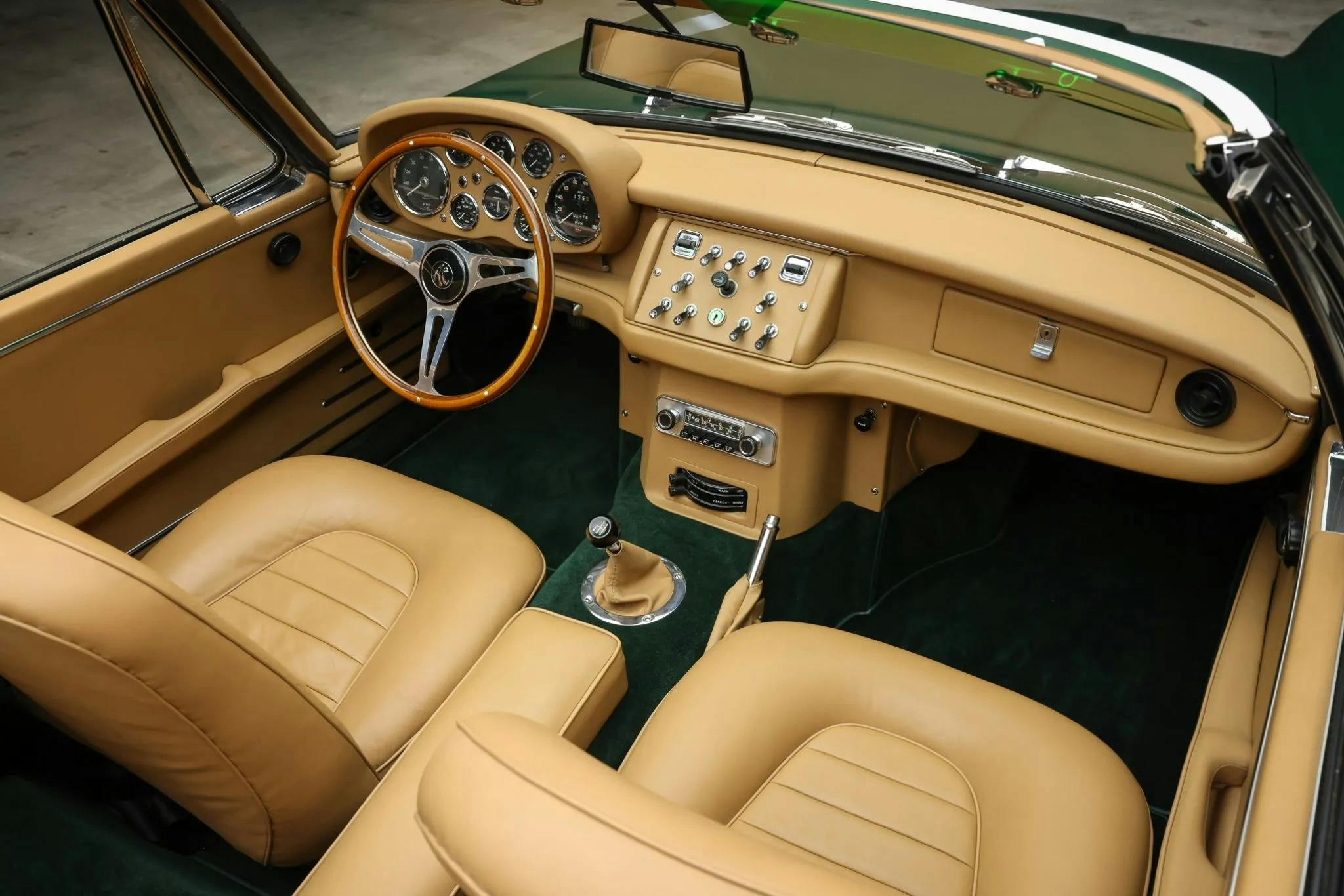
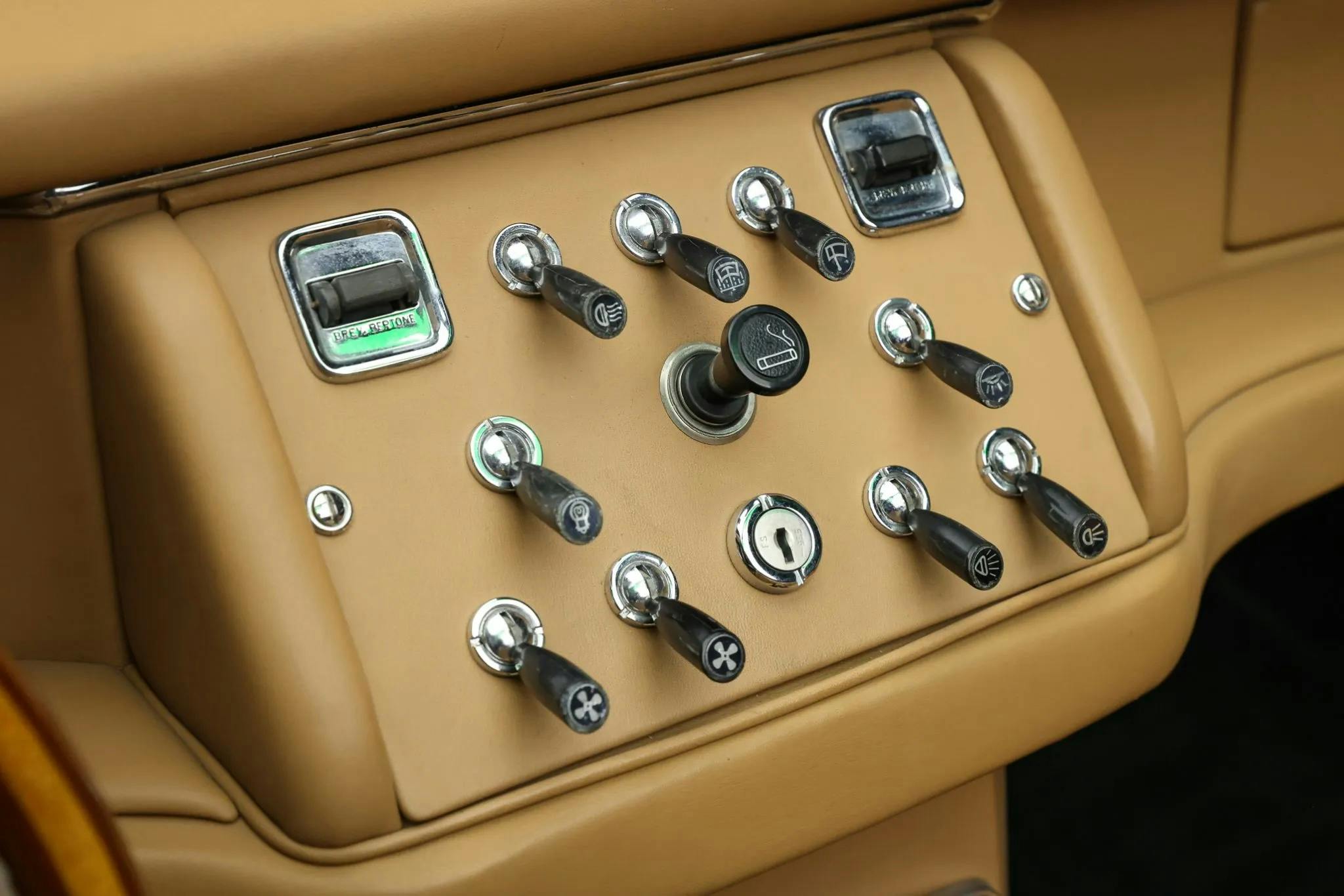
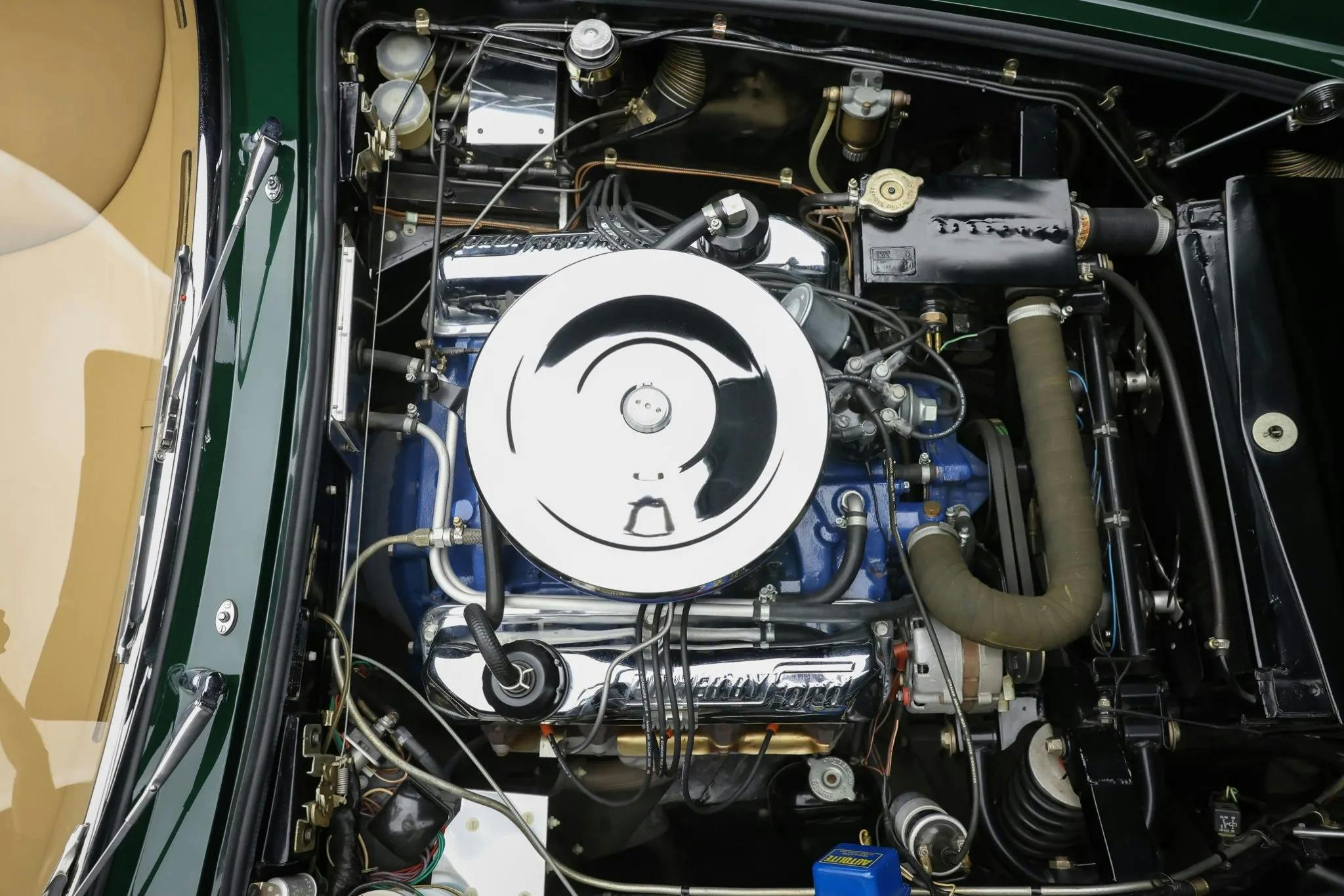

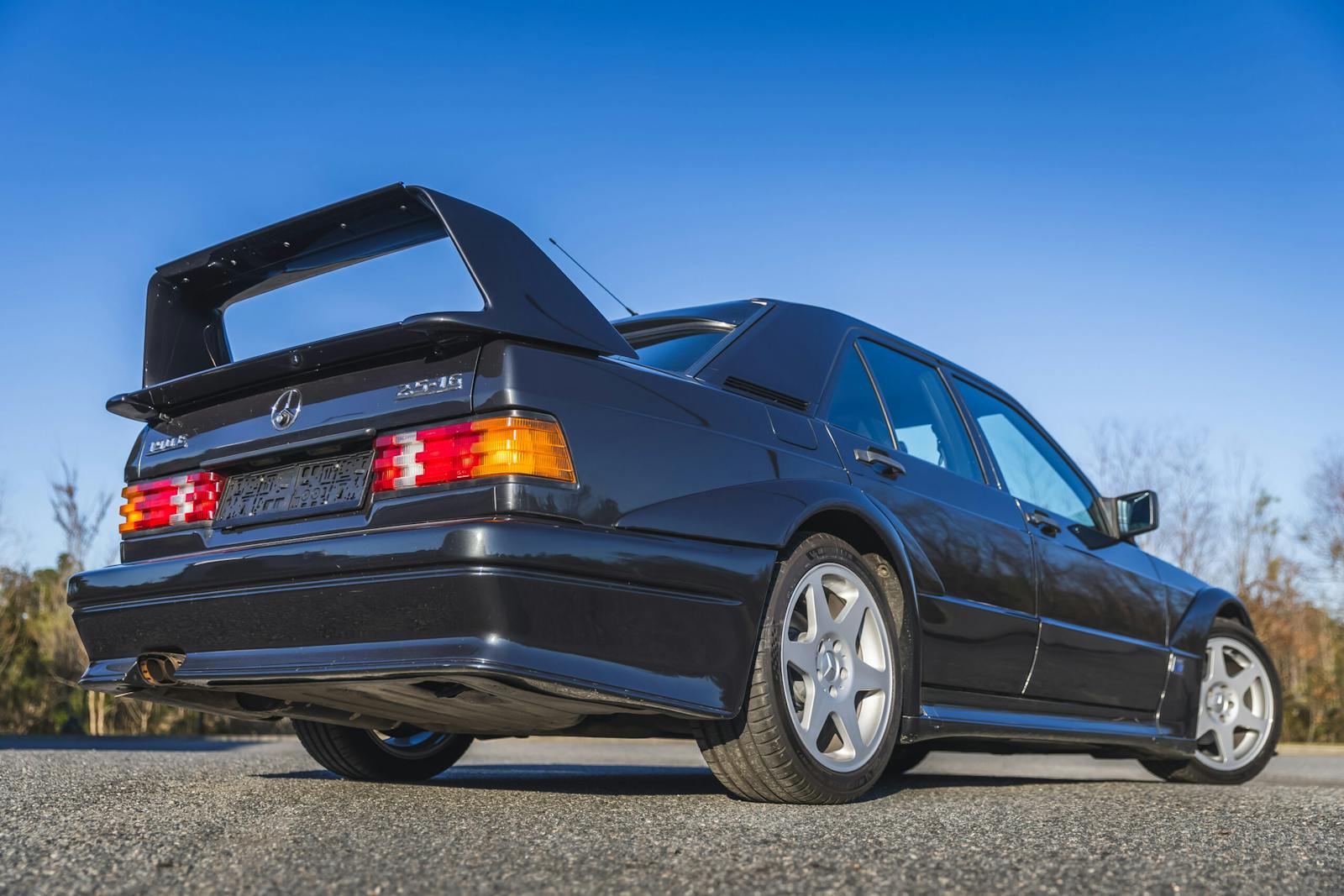
Never knew of these variants but reading the summary didn’t get me too excited. I guess its a nice car but as the article notes it seems to be a cobbling of a lot of other cars. Kind of a compromise of a lot of stuff
No doubt it’s a rare and wonderful car, but the styling does nothing for me. At first glace it resembles a Triumph TR-7, and at $417K is not particularly appealing. Compared to an actual Cobra, it just doesn’t have what it takes….at any price.
TR6 OR TR~7 LENTHENED… KEEP THE INTERIOR…TRASH THE BODY. This body design, & lighting both Fore & Aft is not worth mentioning. Take a Factory 5 Body from Wareham Massachusetts & Drop it on that frame. Viola, Piece of art, worthy of any Car show. Uncle + Doug, we’re on the same wavelength. ED_AUDIO YOUR CORRECT ALSO…..OR…..How about an Austin Healy 3000 Early 60 Body Shell. Rack & Pinion, with a collapsible Steering shaft of course. Now that would turn some heads at Limerock!
With some Jensen-Healey thrown in as well.
I love the interior, especially the dash.
Big block TR6?
Having owned a couple of hundred cars as a petrol head, classic car dealer, collector etc. including a 1964 Maserati Mistral, the first thing I thought of upon seeing the first photo was, Mistral, but no, it’s an AC. As I see it from every angle front, back, inside, dash, colour etc. it is a beautiful motor car and if I had the cash to splash on either a perfect Cobra or this AC, then the AC would win by a country mile!! What a car!
I was thinking the same, especially from the rear.
Gee, I think it looks pretty good. Sure, not the most beautiful Italian car ever (that would be an awfully high bar), but a LOT better than the standard 427 Cobra. I always felt that those extra wide flares on the 427 ruined the lines of the AC Bristol roadster.
I completely agree, I love the slab side cobras over any other AC body atyle!
That interior is great.
A bit like the much later Cadillac Allante in its story. I find it much more handsome than the Cobra, although perhaps it’s just that we have seen so many Cobra and Cobra knockoffs over the years that it’s easy to get jaded.
Color me thinking, “Everybody has a Cobra.” I love the styling (each of us has our particulars), the big block, the proven chassis, and especially the interior. If I could play on that playground, a #2 car like this would be my choice.
That is one good-looking car! Some commenters may find it derivative of various other cars, but so what, if the combined end result looks this good?
In spite of most comments here. I think this looks muuuuch better than any Cobra.
This convertible is a beauty, the coupe is down right ugly.
Technically the AC428 is a Cobra. When AC was negotiating with Shelby and Ford, they were given the rights to build Cobra’s for the rest of the world. The first cars were leaf sprung and titled CS, Carrol, (although the AC ledger had it Carol,) S for Shelby, the next batch were either COB, Cobra Other Britain, which were right hand drive, and COX, X for export as always. These cars had the Cobra badge on the nose and the AC script emblem on the boot. The COX cars were popular with American Fighter Pilots stationed in Europe. The most famous car was COX6057, known as the “Cobra In The Bedroom,” since that is where it was found, after traveling around the world, with an American Air Force pilot! Then the above letters stayed with the later AC289 cars, which looks like big block cars, but with the smaller engine, they left the factory with AC script emblems front and back, though some owners have substituted the Cobra badge on the nose. Finally, the AC428, if you pop the bonnet, you will see the vin starts with CF, Cobra Frua! I have never seen one with a Cobra badge, front or back, but technically! The Spyder is a good looking car any way you slice it!